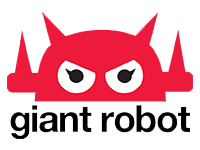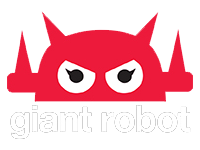Finding the Wolf Within
 On the outskirts of Ulaanbaatar, framed by never ending new construction of luxury housing, and upscale office and retail developments, sits a park that will have to wait until winter’s end to continue its own development. The National Garden Park is part of a new vision for Mongolia’s capital. It has echoes of public green space in South Korea, and the new construction surrounding it is modeled after foreign high rise developments. All in all, a vast departure from the Soviet architecture and urban planning the city was built on, and world’s away from the impoverished “ger district” on the North, East and Western fringes of the city. Mongolia is on a fast track to becoming an Asian Tiger, but its most symbolic native predator will always be the wolf.
On the outskirts of Ulaanbaatar, framed by never ending new construction of luxury housing, and upscale office and retail developments, sits a park that will have to wait until winter’s end to continue its own development. The National Garden Park is part of a new vision for Mongolia’s capital. It has echoes of public green space in South Korea, and the new construction surrounding it is modeled after foreign high rise developments. All in all, a vast departure from the Soviet architecture and urban planning the city was built on, and world’s away from the impoverished “ger district” on the North, East and Western fringes of the city. Mongolia is on a fast track to becoming an Asian Tiger, but its most symbolic native predator will always be the wolf.
Tiger Beer’s international art project, Tiger Translate returned to Mongolia and reunited with New York based artists, FAILE for the creation and installation of The Wolf Within. They worked with Mongolian artist, Batmunkh to create the permanent sculpture, and with the help of the Mongolia Arts Council, they also had a chance to collaborate on stencil pieces around the city.
FAILE and GR friend and sculptor, Charlie Becker, tell us more about the evolution of the project from stencil, to sculpture, to 5 meter high fiberglass re-imagining.
GR: Can you say a few words about the collaborative process and taking concepts from 2 dimensions to 3?
F: We’ve worked collaboratively all our career so it’s very natural for us to have the help from another artist in the process of realizing one of our ideas. Charlie has been our go-to-guy to help us in the process of bringing our images to life. It’s usually a time consuming process. One of the biggest challenges comes in getting the emotion right, to capture that usually involves several revisions before getting it right but it always leads to amazing results in the 2D to 3D transformation.
CB: Coming from a background as a designer, It’s second nature for me to work in collaboration. When I work as a for-hire sculptor, my role is to capture the artists’ intent, not to push my own vision. But Patrick and Patrick really understand and trust me to interpret what they are looking for.
The challenge in bringing FAILE’s pieces to life is that they can combine things from different 2D sources that can’t exist together in the real world. Getting the scale and anatomy of a horse’s head to merge convincingly into the neck of a human, for example. Or a relief that’s so deep that you can see all around it, requiring distortion to make the perspective look right from all angles.
I seem to have an ability to understand where the artist is coming from, and to work in the mindset of the people I’m working with. In the few instances like this where FAILE has worked with other sculptors, I tend to act as an interpreter of their style and vision, since I’m bilingual – I speak both “artist” and “sculptor.”
A lot of figure sculptors work in a heroic style, either from working on monuments, or – here in LA – sculpting superheroes. Most fine artists I’ve worked with are at the opposite extreme, looking for the subtlest emotions, the spaces in between emotions, or the combination of several emotions. I liken it to the difference between acting for the stage, and acting for the camera. In the theater, you are emoting so they can see you in the back rows, but on camera, there is much more opportunity for subtlety. In trying to capture “Eat with the Wolf” I’d say that character is going through an emotional upheaval, simultaneously experiencing fear, joy, anger, wonder, awakening, and maybe even a few more.
 GR: How did the project through Tiger Translate come about and how did you decide on which of your pieces would best suit the project?
GR: How did the project through Tiger Translate come about and how did you decide on which of your pieces would best suit the project?
F: We worked with Tiger Translate on a set of paintings for a show at the Shanghai Sculpture Center in 2006. That was a great experience. They reached out late this Spring about doing a large scale sculpture in the city of Ulaanbaatar and that sounded amazing to us. We had a few pieces in mind. We know that horses are a large part of their cultural identity and that worked well for us as horses are featured prominently in our work.
After submitting a few ideas like Faile in Paradise and Surfer Horse, which we thought would be a nice ironic twist to a landlocked country, we realized that the symbolism of animals, gender roles and other cultural folklore was much different from our perspective to theirs. From the very beginning though, we showed the finished sculpt of Eat with the Wolf in our ideation and they got really excited about that particular piece and kept coming back to that. (The title of the sculpture was changed to ‘Wolf Within’ as Eat with the Wolf didn’t translate into Mongolian in a clear way. We felt Wolf Within had much the same commentary).
GR: How much did you know about the economic and political climate of Mongolia before you began the project?
F: Originally, very little. After doing some research though we began to realize how fitting and really perfect Eat with the Wolf was for their fast growing economy. Seeing how the flood of money from mining rights is pouring into the country and dramatically changing the face of the city, it’s incredibly poignant to the ideas Eat with the Wolf is commenting on. Also, the setting in the National Park, with the sculpture backed by a serene mountain preserve and facing the vast expanse of cranes and steel skeletons is so on point that it seems meant to be there.
GR: What were your first impressions of Mongolia and Ulaanbaatar?
F: First impressions were the air quality with the coal burning the evenings are quite polluted feeling. The roads are very bumpy and filled with potholes. The traffic is insane. Yet, things work there. We found the people to be amazing. Truly incredible. Very warm, welcoming and excited about the future. We have nothing but the fondest of memories upon leaving. It’s a place that we look forward to seeing again in a few years. There are several reasons that we look forward to going back to revisit. One being, we didn’t make it much outside Ulaanbaatar and that’s not fair as the magic on Mongolia seems to be found in the pastoral landscapes and the Gobi desert.
GR: Did the transition from stenciled image to larger than life-size work meet your expectations?
F: Well, this is where it was interesting. We worked with Charlie for almost 6 months on Eat with the Wolf. Given all the work we’ve done over the last 7 years together, we’ve gotten pretty good at knowing each others expectations and style. Also in going back and forth editing photographs digitally to suggest changes and working on sculpture together long distance. This piece was made in roughly 2 months. So it was critical to have a reference already finished to share with Batmunkh the Mongolian sculptor. They did a pretty good job of interpreting close to our specifications.
Seeing it in person was stunning. It’s very large at 5 meters on its granite base. And again, the setting there is so appropriate for the commentary of the piece. Knowing that it’s permanent is quite an honor as an artist. Especially when so much of our work is about it’s temporary time in the urban environment. To have an artwork that can speak to generations is really amazing.
GR: Any thoughts on the context of the location of the piece, now that you’ve seen what’s developing around it?
F: I think I’ve mentioned this a few times now. The setting and everything about it’s location is critical to the bigger story of Wolf Within. It speaks volumes in that spot and hopefully is seen that way for their culture and time in history there. They really have the opportunity to create a great future in Mongolia if their growing wealth is used to support it’s people and not that of a few elite businessmen and politicians.
GR: What were your impressions of street art in Mongolia?
F: This may have been our biggest regret. We weren’t there long enough to focus on the street. It’s wide open though. It would be a street art mecca if it weren’t so far away. The kind of surfaces you find there, you just don’t find in many cities anymore. It was so raw. The wood and metal and the patina of those surfaces was made for the work we like to do. The people too were so interested in the work. They loved anything with a Wolf in it which was great as that’s a common character in our work. They would ask to have it on their building or home because of what the images stood for. That was so inspiring in a way. They couldn’t even understand the text in the work, it was just a visceral and almost mythological resonance to the work that was great to connect on.
–
If you’re in the neighborhood, you can find the National Garden Park if you head south on Olympic Street from the city center. Take the first left after you cross the tracks of the National Railway. The Wolf Within is just beyond the monument to the Mongolian Police. You can find more photos from my visit to the sculpture here.
For great street art around Ulaanbaatar, just keep your eyes peeled. FAILE did a collaborative stencil project just off Peace Avenue, not far from the State Department Store. Work in prominent locations gets buffed quickly, but there are spots around the city with big murals by local artists, and more stencils and stickers find their way onto accommodating surfaces everyday…




